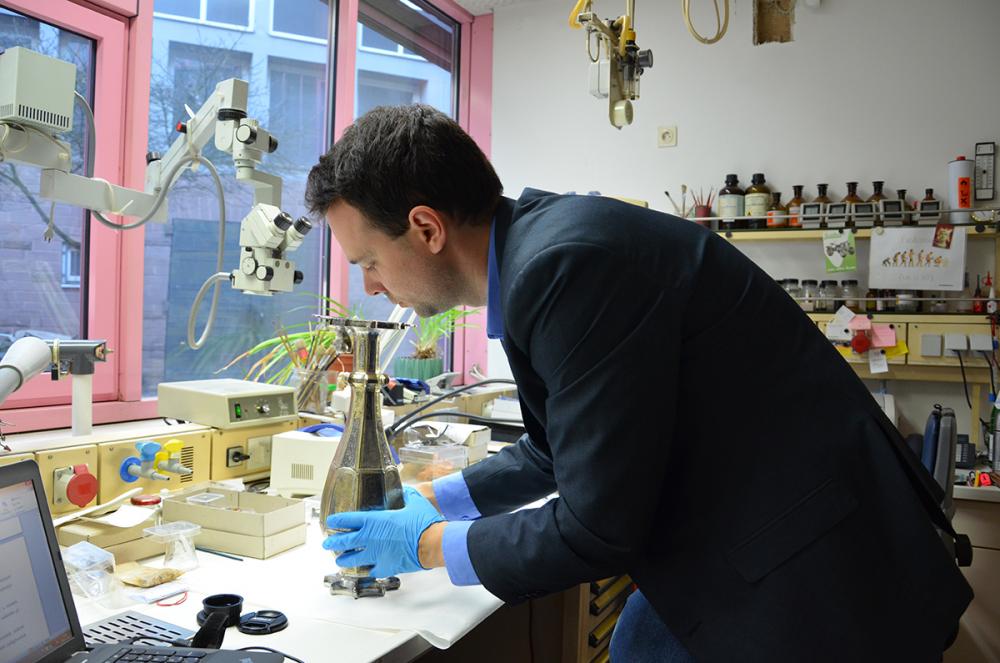Study of the Trier ewer
In 1628 a large silver hoard of nearly 50 objects was discovered during digging in the garden of the Trier Jesuit house of novitiate. Corresponding to contemporary custom the pieces were melted down. More than two and a half centuries later, in 1992, another valuable find, a large silver jug was found in the immediate vicinity of the area where the discovery of the silver hoard can be determined according to contemporaneous descriptions. Unfortunately it cannot be fully verified whether the recently discovered jug used to be part of the former hoard, but there is good reason to presume a connection between the two. In the scope of the art-historical sub-project of the Seuso research project, in December 2015 Ádám Bollók made a short, one-day research trip to Trier to study the silver ewer in the Rheinisches Landesmuseum. The aim was to personally examine in detail the jug, which was then known only from preliminary publications. The Trier object is a very close parallel to the ewer decorated with animal figures and circus scenes of the Seuso treasure, with regard to both the shape of the vessels and the execution of their decoration, despite the thematic differences of the represeantation. At the same time, it is a good parallel to the Dionysiac Ewer of the Seuso treasure in terms of form. Taking the Trier ewer in hand provides a number of lessons for a researcher. An octagonal cross-sectional body of a vessel is well-known from the late Roman era, although it does not belong to the most frequent form in silver vessel craftsmanship of late antique times. The unusually elongated proportions of the body of the large Trier vessel and its hinged, domed lid lend an almost futuristic character to the ewer. Unlike their Trier counterpart, both the octagonal vessels of the Seuso treasure, the Animal Ewer and the Dionysiac Ewer represent far more traditional proportions. Besides these characteristics of the Trier vessel it is also noteworthy with regard to the quality of its decoration. The master or masters, who made the ewer, visibly did not pay too much attention to finishing each tiny detail of the object with equal care and precision. However, the unevenness of quality, conspicuous even at first glance, provides valuable clues for today’s beholder. On the one hand, they offer clues for a classification and interpretation of the differences between craftsmen. On the other, in a broad comparison they help with marking out within the world of still existing products created by late Roman silversmiths the imprecisions which sometimes appear on several pieces of the Seuso treasure and are sometimes of a similar extent, yet far less significant than can be seen on the Trier ewer.
By Ádám Bollók

